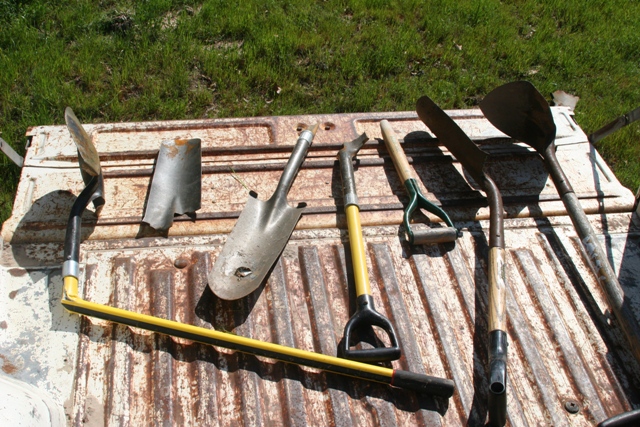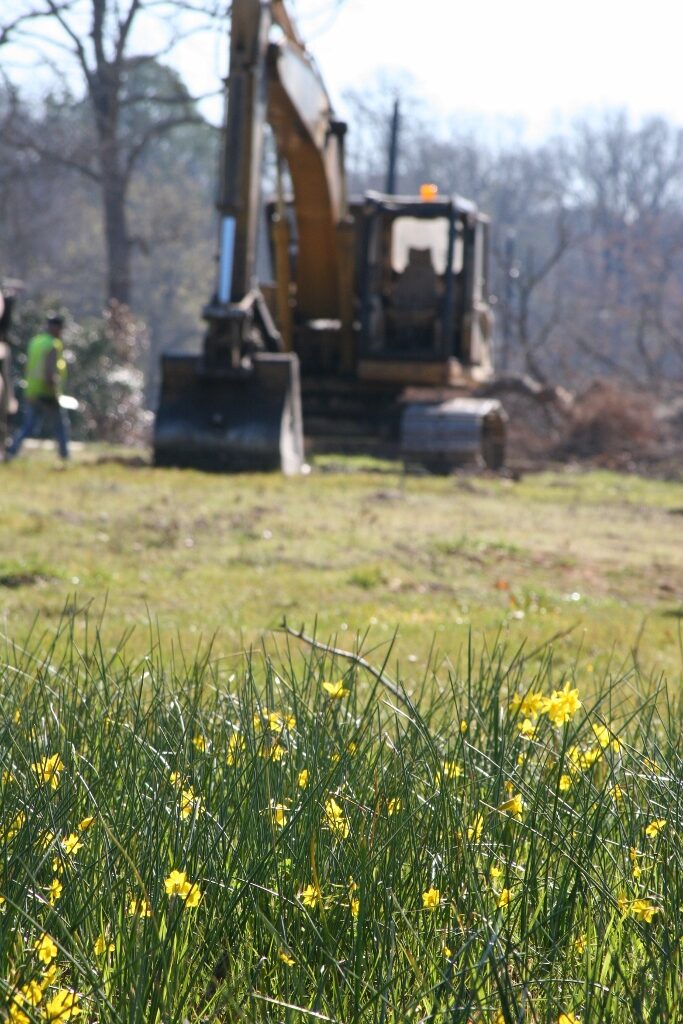Chris Weisinger explains the best way to transplant red spider lilies.
The quippy answer is “Move them when you have time.” I suppose after giving this answer the flower bulb lecturer could drop the microphone and exit stage left. It is the same kind of answer to the question: “What is your best camera?” The answer is, “The one you have on you.”
But does this really answer the question being asked? Yes, it does. We live busy lives and flower bulbs are made to survive. The “bulb” is nothing more than modified compressed leaves built to store food and supply that food to the growing bulb. Disrupting the life cycle of the bulb is not ideal, but perennial bulbs suited for a particular climate will recover. However, below I will discuss times that are ideal/best to dig and move bulbs. Some takeaways from the this first answer include:
- Dig, share, and move bulbs when you have time or opportunity. If the bulb is actively growing, try to plant it back in the ground as soon as possible.
- Shipping bulbs “in the green” is ok if a) you do not expect a bloom for a couple more years and b) the flower bulb is suited as a perennial in your climate. In other words, a Darwin hybrid tulip from Holland that you plant for forced annual blooms in the spring is NOT a good candidate for shipping in the green. It is an annual and everything hinges on that one spring bloom. After that, it will be thrown away. On the flip side, a red spider lily that ships in the green might take a year to recover but will eventually thrive and grow for generations once planted.
The above principal has been proven true in my life—collect and move bulbs when you can. When I stopped by the side of the road to visit with a gardener and he offered to share bulbs with me, I was delighted. At that immediate time, I needed to be somewhere and could not come by for a while. After a couple of weeks, I planned my schedule to return and prepared to dig. When I showed up, he either did not remember me or changed his mind, because he said he would not share any bulbs. An example from last year, is when I planned to move some bulbs in my own garden. I put it off a day, and then 4 weeks later, due to the business of life, I still had not moved my bulbs around. In summary, keep a shovel or a spade with you and be ready to do some digging!
What is the ideal time to transplant? This is the question gardeners are typically asking. The general principal with perennials, is that you dig and move them during the opposite season of their blooms. Fall blooming plant = move in the spring. Spring blooming plant = move in the fall. This does not always hold true, but it is a good guideline for our brains when we first consider the question. Let us look at some specifics in the flower bulb world.
General rule for the flower bulb world: after the foliage has lived through its growing season. Let the foliage start to yellow and die down (mature), and then dig. After this maturing process is an ideal time to dig the bulbs and know that they will remain somewhat dormant during transplant/sharing. More specifically, you can break bulbs up into three categories.
Fall Planted/Spring Blooming Bulbs: By far this is the most traditional system that we use in the Southern United States. Think daffodils, tulips, hyacinths, etc. These bulbs are (normally) planted in the fall and bloom in the spring. What is more accurate to say, is that these bulbs begin to put out fresh roots and “actively” grow once the temperatures start cooling and the days begin to get shorter. Fresh leaves appear in late fall and winter. The bulbs bloom in the spring. The foliage lasts until May/June. Ideal time: let the foliage die down in May/June and dig the bulbs in late June/July.
Fall Blooming bulbs (for example, the red spider lily – Lycoris radiata): these bulbs also start putting out active roots in the fall, just like the previously mentioned category of bulbs. However, they bloom BEFORE the foliage appears – technically these are hysteranthous geophytes in contrast to synanthous geophytes. Hysteranthous means the leaves emerge AFTER the bulb flower, while synanthous bulbs bloom WITH the leaves. Regardless of the technical terms, the foliage comes up in the winter and grows through the spring, partnering with the other spring blooming bulb foliage. Ideally, these bulbs are treated like the other spring blooming bulb foliage. Let the foliage mature, or die down, and transplant in June/July. Pro tip for red spider lilies: they really don’t like to dry out, even in the summer. It will cause the bloom to skip that first/second year.
Summer blooming bulbs (Crinums, rain lilies, Hymenocallis): these are typically more tropical/sub tropical bulbs. A hard frost or freeze and cold weather in general will send them into dormancy, and they will start to actively grow again once the weather warms up in late spring. They are “dormant” while the spring blooming bulbs are active. Depending on the varieties and how temperate is the climate, these bulbs will bloom late spring through the fall, covering a range of summer months. In tropical areas with tropical bulbs, some will bloom intermittently all year long. Dig/divide these bulbs whenever is convenient. The only warning would be to NOT dig these bulbs and leave them exposed during a hard freeze…that will kill them and inversely DO NOT leave dug and exposed to direct summer sunlight. Also, tropical bulbs can get big! I’ve broken many a shovel trying to dig up crinum clumps. Ideal time: try to let them bloom during their spring, summer, early fall period (plant specific) and move them after that you so you can enjoy the blooms that year.

In summary, every answer after my first paragraph is for those of you that wanted a deep dive into ideal times to plant the bulbs. If you are overwhelmed, go back to my first sentence. Get digging and start enjoying—the learning will take care of itself! (No one ever reads an instruction manual on how to ride a bike).


Thank you for this informative article. I am a firm believer on moving stuff around in my garden when the mood strikes me. The plants always recover and get on with their life.
Thanks Candy! We agree. Happy gardening!
Thank you. I have gobs of spider lilies to share with my family.
They will love you for it! And the bulbs will last a lifetime. Very exciting.
This was great information! I have a few beautiful amaryllis that my mother had in her flower bed in Florida. (I’m in Texas.) They bloom gloriously every spring. I’ve thought it would be great to dig one up for my daughter to put in her flower bed, but was worried I might kill it. You have given me confidence! Thank you!
I keep a folding “army” shovel in my car at all times for plant “rescue.” They are not expensive and come in very handy! My first rescue was red spider lilies about to be bulldozed at blooming time. Many didn’t bloom the next year, but some did. And my most recent rescue was red spider lilies at my grandparents old homesite. There wasn’t much left there, but I recognized the foliage in late February. Only dug 3 clumps, but found 37 bulbs! Foliage remained green and is dying down now. Very excited to have something from my grandparents house!
Nancy, this is a great story! You saved more than just bulbs…you saved a memory and part of your history. So excited for you and thank you for sharing with everyone.